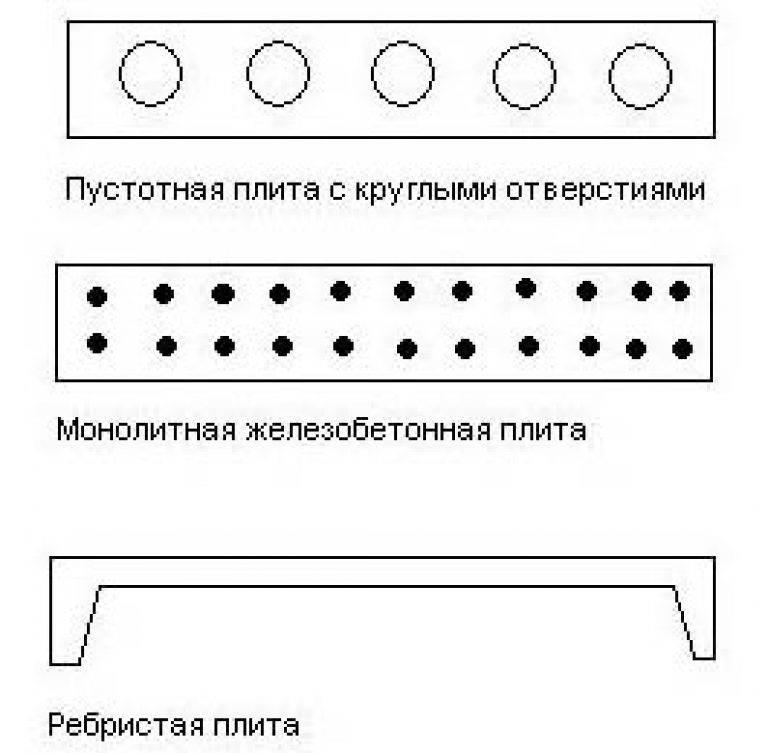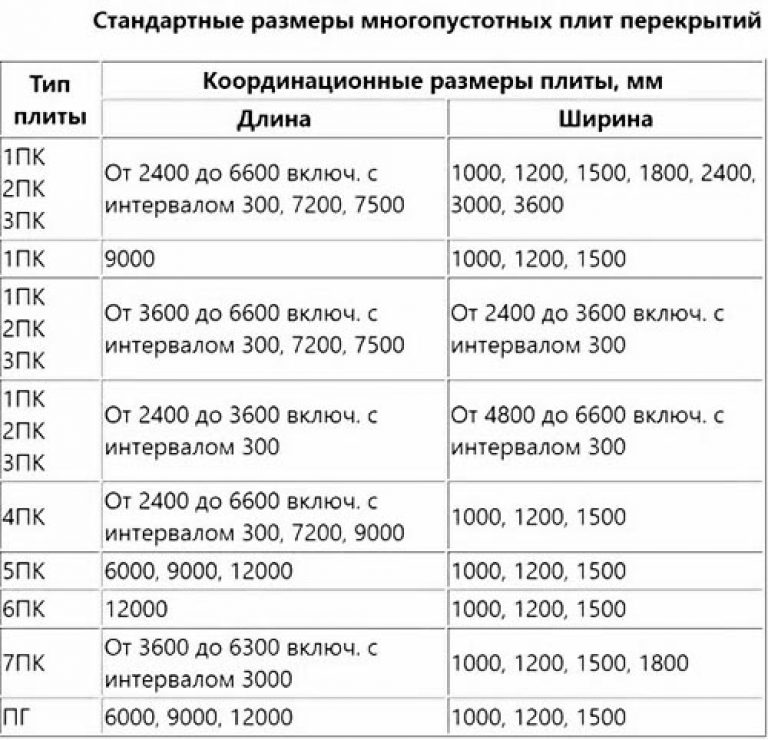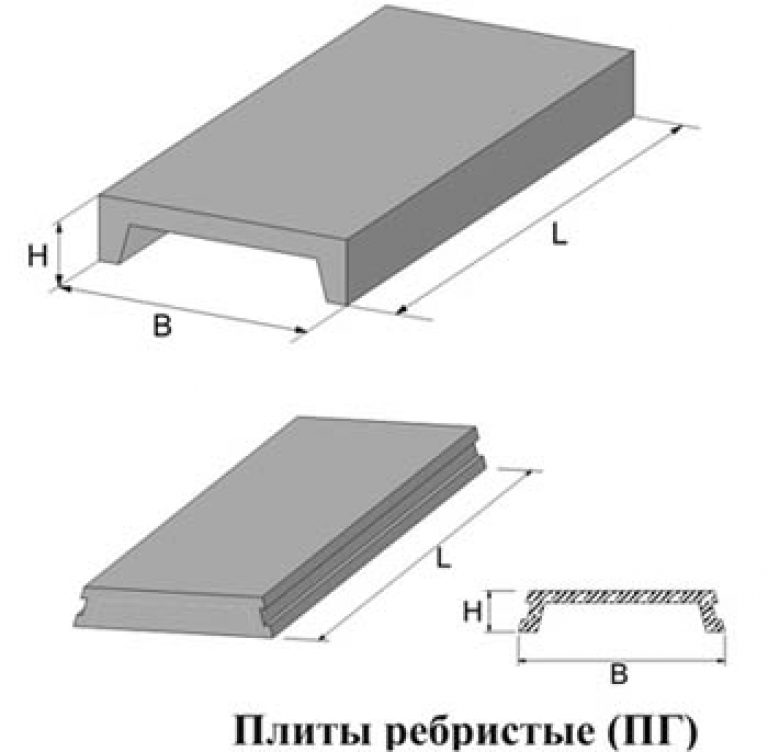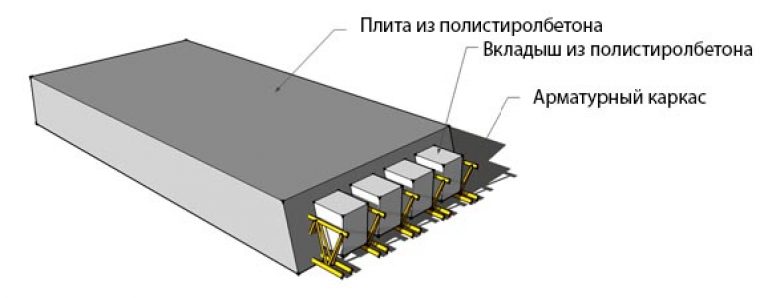How much do floor slabs weigh?
In the process of construction of residential and administrative buildings, industrial complexes, heating mains, reinforced concrete floors are widely used. Their popularity is explained by durability, reliability, fire resistance, environmental safety.
Types of plates and their features
The overlap in the structure serves to separate floors horizontally from each other, as well as living quarters from attics and basements, to block access to communications. In addition to separating and enclosing functions, it plays a protective role, giving rigidity to structures. Production is regulated by GOST 23009-78, which also establishes a system of alphanumeric designations. Indicate the type of product, brand of solution, linear parameters and additional information. Weight is not included in the marking, it is determined to a lesser extent by the type of concrete and to a greater extent by dimensions.
1. Monolithic.
Overlapping of this type has a large specific gravity, since cavities are not provided inside it. Standard ones are most often cast from heavy concrete. They will be much more massive when using a high grade. Linear dimensions also affect the weight of floor slabs. Depending on the thickness, they are divided into two types:
- 1P - 120 mm, weight varies from 4.3 to 7.1 tons;
- 2P - this option is more powerful (160 mm), up to 8.7 tons.
A lightweight 120 mm slab requires the arrangement of heat and sound insulation. After carrying out the relevant work, the floor will weigh a little more (the mass of the product, insulation, sound insulator is summed up).
According to GOST 19570-74, solid panels for rooms are allowed to be made from autoclaved cellular concrete (strength grade 25-150, volumetric weight - 800-1200 kg / m3) and use them at a humidity of not more than 75%. Length - from 0.6 to 6.0 m, width - up to 1.5 m with a thickness of 200 or 250 mm. The standard overlap of this group of brand P60.12-3.5Ya (6x1.12x0.25 m from M35) weighs 1.1 tons.
A separate view is additional elements that allow you to assemble structures of a non-standard size. These reinforced concrete products are selected by length, it is equal to the corresponding parameter of a conventional slab (1.8-5 m). The width is small, and the weight is no more than 1.5 tons.

2. Hollow.
Thanks to special technological holes, the weight load exerted by the hollow panel on the foundation and walls is less significant. Depending on the number and configuration of cells, there are three types:
- PC - the floor contains round chambers; a diameter of 159 mm corresponds to the marking 1PK, 140 mm - 2PK;
- PB - this is how hollow-core slabs with various cell options are designated;
- PG - 260 mm thick with elliptical voids.
Due to the holes, the working cross-sectional area, volume and weight are reduced, and the bearing capacity is reduced. Among the advantages, it is worth noting the improved heat and sound insulation properties. A product with internal chambers is usually used to form a basement or interfloor ceiling. The weight of hollow core slabs 6 m long, depending on the concrete strength grade, is 2.8-3 tons. To enhance the effect of thermal insulation and not increase the weight too much, you can fill it with cellulose, mineral wool, foam plastic.

Represent interconnected beams filled with concrete. They have a U-shaped section, are distinguished by high bearing capacity and resistance to bending stresses. Not only solid-cast ribs work for bending, but also reinforcing metal elements. Heavy reinforced concrete ceiling is suitable for attics, industrial buildings, especially for "hot" shops and chemical production. They are rarely used in residential buildings: in this case, the panel will have to be covered with cladding, and this requires additional costs.
The weight of a standard size slab (3x6 m) may vary. It depends on the material from which it is made:
- lightweight concrete - 3.8 tons;
- heavy - 4.73 tons;
- dense silicate - 4.0 t.

4. From polystyrene concrete.
Lightweight types manufactured directly on the construction site from a mixture of expanded polystyrene, Portland cement and quartz sand. The overlap provides high-quality thermal insulation and fire protection, absorbs noise, has a high frost resistance index. Throughout the entire period of operation, the material retains its structure unchanged. Compared to reinforced concrete, they are less durable, although with standard strength indicators of 400-500 kgf / cm2 they do their job quite well.
Overlapping with a polymer additive helps to solve the problem of reducing the load on load-bearing walls and foundations. A cube of reinforced polystyrene concrete weighs about 1 ton, which is about 2 times less than the specific gravity of classic monolithic heavy concrete slabs (although somewhat more than hollow ones). Panels with polystyrene are useful for the reconstruction and overhaul of buildings with weak foundations.

Cost and weight
The price depends on the quality indicators of the materials involved in the production, the remoteness of the manufacturer from the construction site. When buying massive products, you can try to reduce costs: find out the conditions for wholesale deliveries, get acquainted with promotional and bonus programs. To save money, buy lightweight hollow options. Prices for ceilings in the Moscow region.
